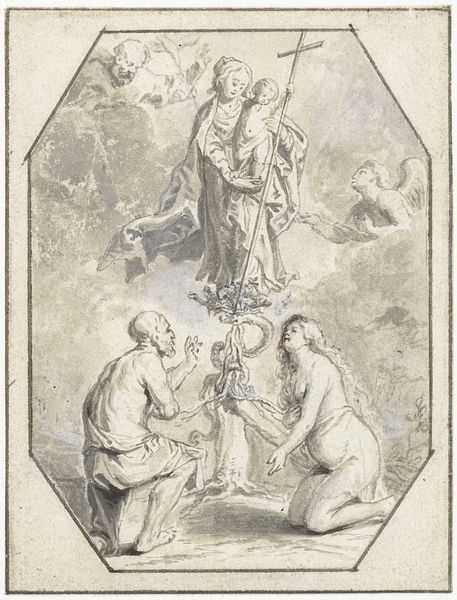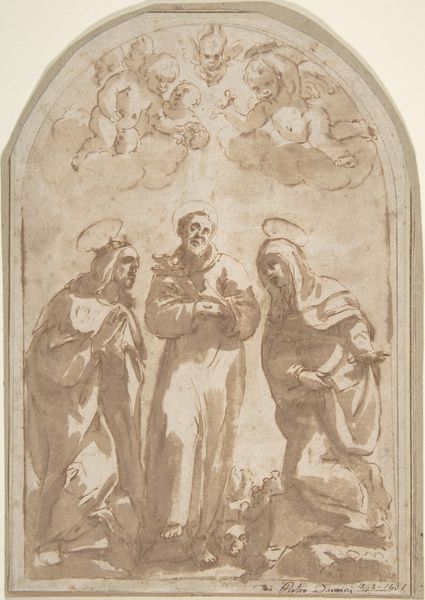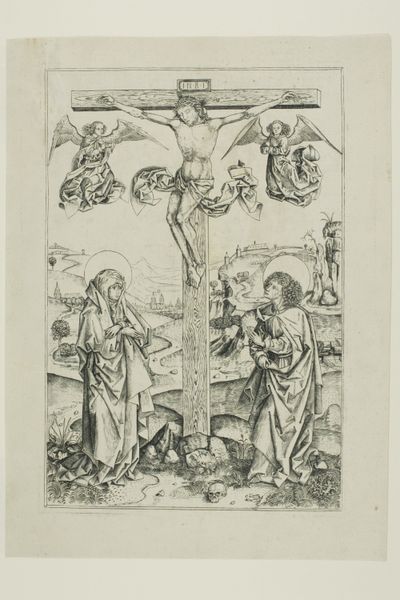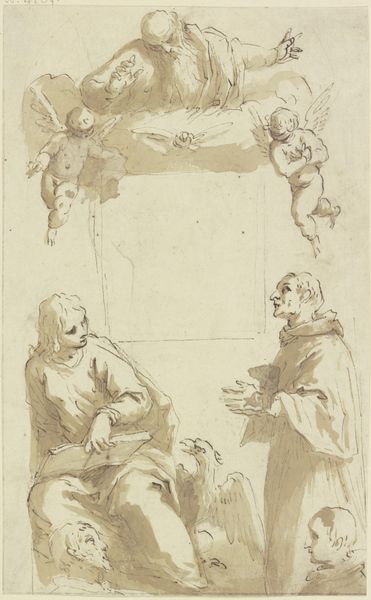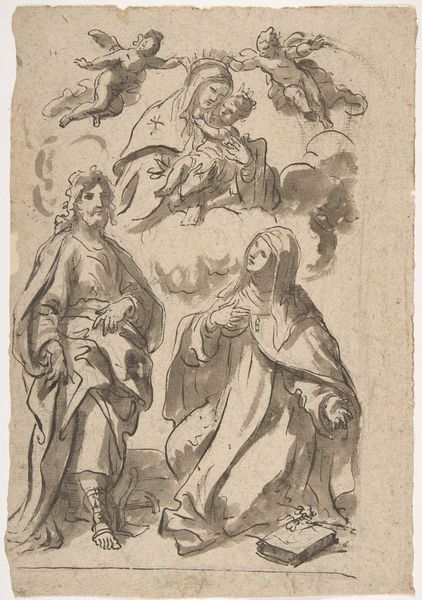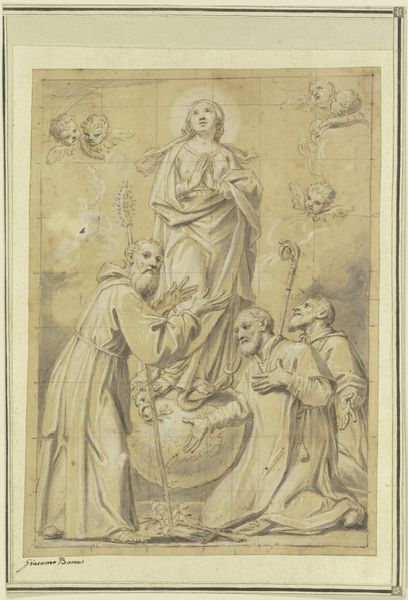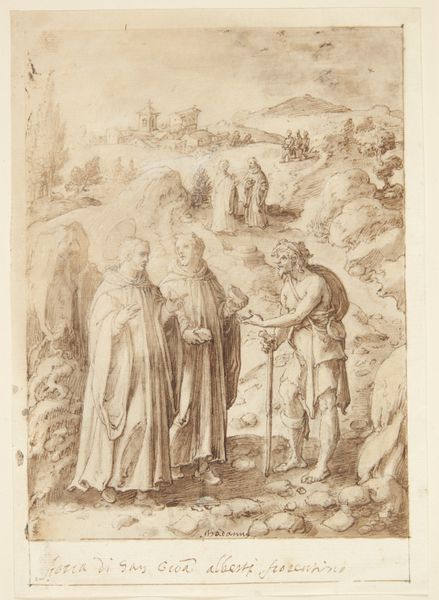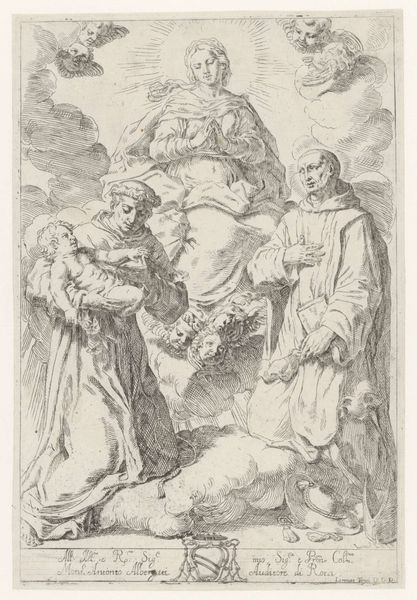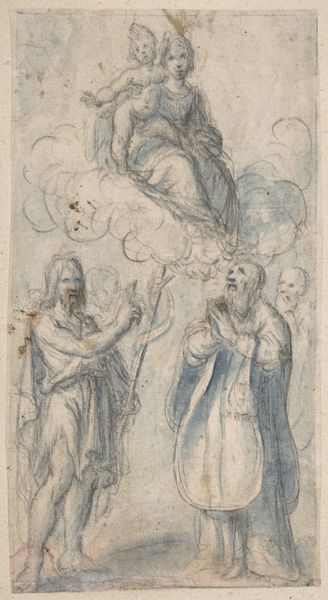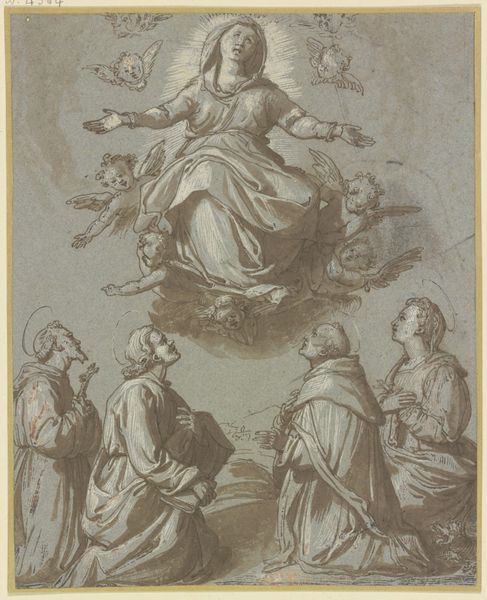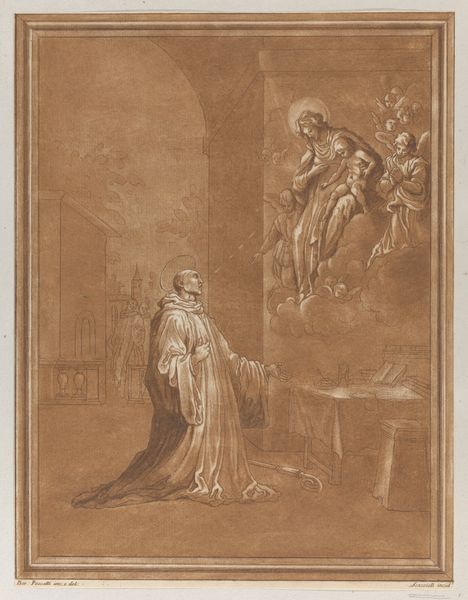
The Virgin and Child with Chaplets Appearing to Saint Dominic and Saint Catherine of Siena 1570 - 1639
0:00
0:00
drawing, print, pencil
#
drawing
# print
#
mannerism
#
figuration
#
pencil
#
history-painting
Dimensions: 8-11/16 x 6 in. (22.1 x 15.3 cm)
Copyright: Public Domain
Editor: Here we have a drawing by Pietro Mera, or “Il Fiammingo,” created sometime between 1570 and 1639. It's entitled "The Virgin and Child with Chaplets Appearing to Saint Dominic and Saint Catherine of Siena." It's done in pencil, and my first impression is of the composition: it looks staged, almost like a theater production. How would you interpret this work, considering its historical context? Curator: Well, first, let’s acknowledge that this is a drawing, likely a preparatory sketch for a larger, possibly painted, altarpiece. Its display within the Met signifies a shift in the perceived value of the artist's process. These weren't necessarily intended for public viewing in the same way paintings were. Editor: That's interesting! Curator: The fact that it depicts a religious scene involving the Virgin Mary and prominent saints within the Catholic tradition hints at its likely patronage and function. Consider the Counter-Reformation. Religious imagery served a didactic purpose, reaffirming doctrine. How might this image, showing the Virgin bestowing rosaries, function within that context? Editor: It feels like an endorsement of the rosary, emphasizing its importance to faithful Catholics. Maybe it was made in response to the rise of Protestantism? Curator: Precisely. Also, the mannerist style, with its elongated figures and dynamic composition, deviates from earlier Renaissance ideals of balanced harmony. How might that stylistic choice contribute to the overall message? Editor: The drama would underscore the power and divinity of the Virgin's appearance. So, it is promoting not just an idea but the perceived supremacy of the Catholic Church during that time? Curator: Exactly! Understanding the drawing's creation necessitates looking at its social, religious, and artistic environment. Editor: I’m glad to consider these aspects, thanks to your point of view. It changes everything I saw in this drawing. Curator: And I think discussing your impressions allowed us both to discover the power of social context in understanding the art!
Comments
No comments
Be the first to comment and join the conversation on the ultimate creative platform.
